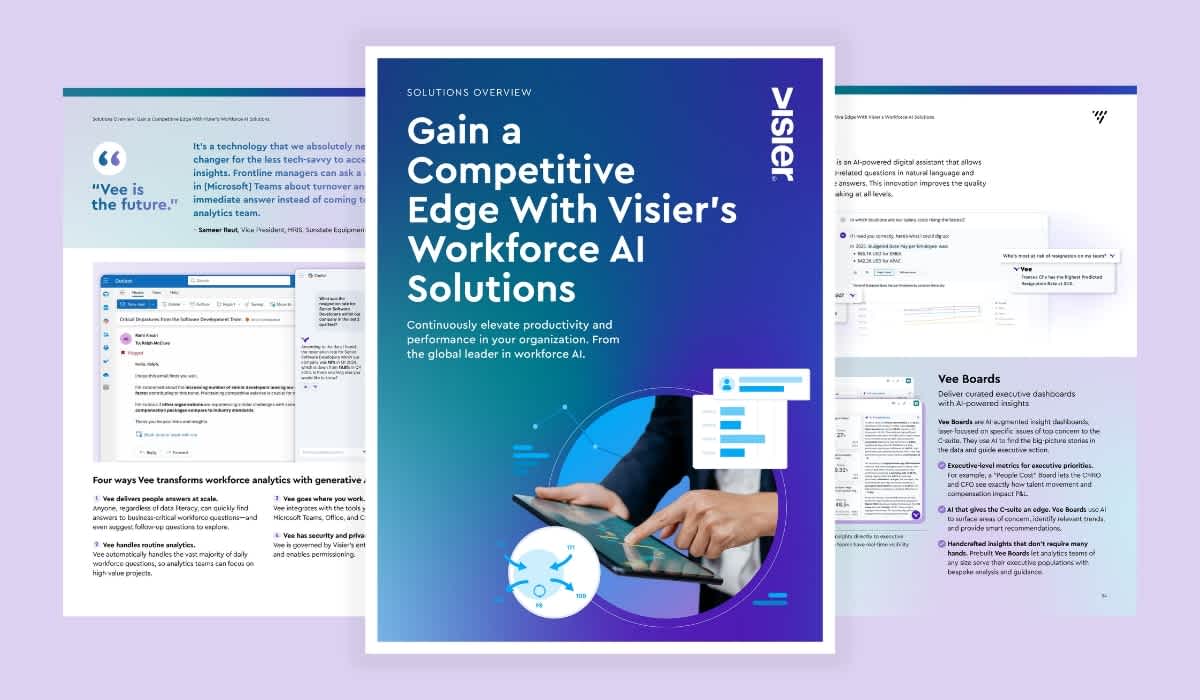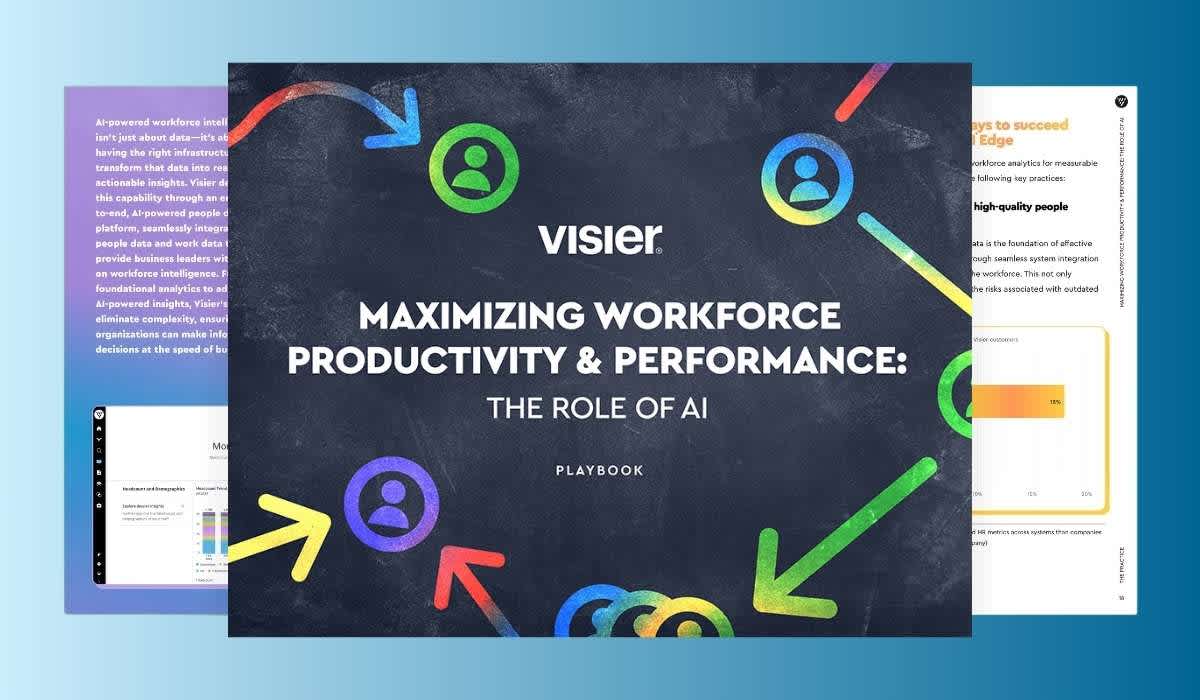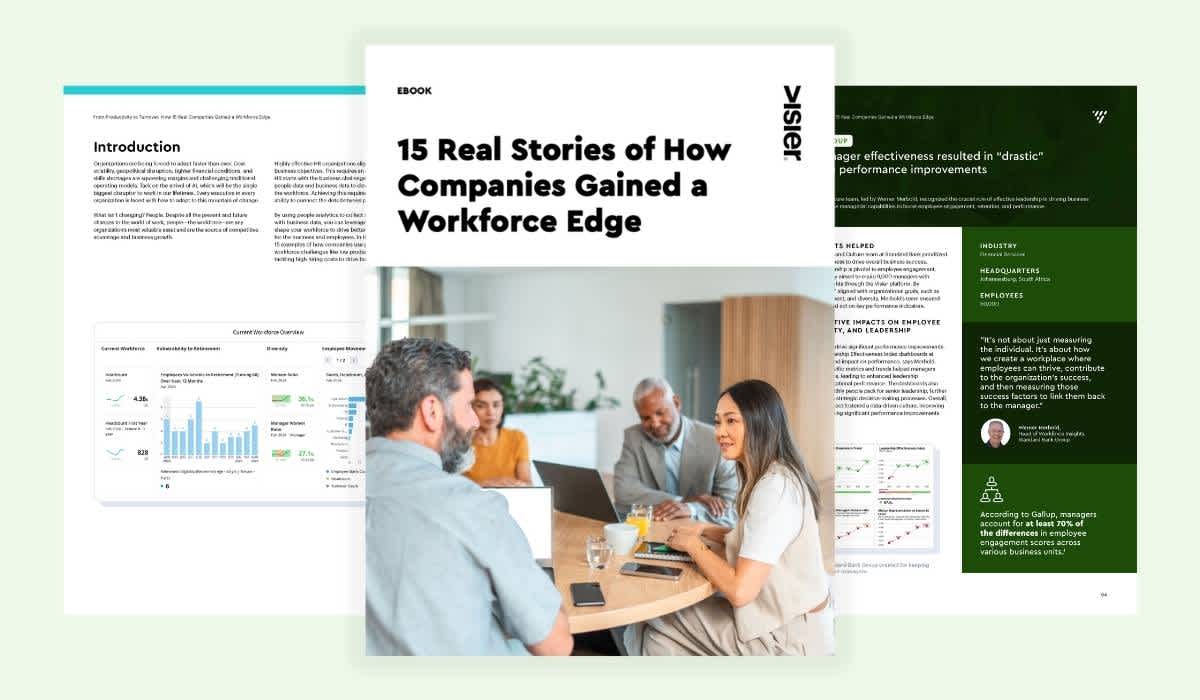Gender Wage Gap Persists in 2025, Visier Customers Outperform
The gender wage gap persisted in 2024, but new research shows that customers who use workforce data insights are more successful at narrowing it. Read more.

Increasing women's economic participation and success isn't just equitable—it's economically smart. Since 1967, the persistent gender wage gap has resulted in a cumulative loss of $61 trillion in wages for working women—translating directly into significant missed opportunities for economic productivity and growth in the United States. Gender equality, however, isn't straightforward; it’s a multifaceted challenge that requires addressing numerous factors, including the critical issue of gender pay equity—ensuring equal pay for equal work.
Equal pay for equal work is mandated by law
Equal pay for equal work has been mandated by U.S. law since the passage of the Equal Pay Act in 1963, explicitly prohibiting pay discrimination based on sex. Additional legislation, such as Title VII of the Civil Rights Act of 1964 and the Pregnancy Discrimination Act of 1978, has further reinforced these protections, aiming to ensure equitable pay and workplace fairness for all employees.

Calculating the wage gap: Visier customers outperform
This year, Equal Pay Day falls on March 25, 2025, and is based on an earnings gap of 83 cents USD to the dollar. The day is a symbolic representation of how far into the following year a woman in the United States must work to equal the annual wages earned by a man. This date is determined by the AAUW based on U.S. Census Bureau employment data estimates. Notably, this same pay gap, 83 cents to the dollar, was also reported by Payscale from their research of 350,000 employees.
At Visier, we've closely monitored gender pay equity trends for years, leveraging our vast community database containing millions of anonymized employee records. This year, our focus sharpened further, analyzing pay equity trends between 2023 and 2024, specifically aiming to bypass lingering distortions from pandemic-related labor market disruptions.
We have calculated the gender wage gap to be 91 cents to the dollar based on extensive analysis covering over 120 enterprise-level organizations in the U.S., representing a collective workforce of more than 1.5 million employees*. Our review included compensation data for all employees as well as specifically examining manager-level positions by gender.
How gender pay equity has evolved between 2023 and 2024
1. The gender pay gap narrowed in 2024.
In 2023, the median salary ratio was $0.86, meaning women earned 86 cents for every dollar earned by men, reflecting a -14% pay gap. This gap improved in 2024, with the median salary ratio rising to $0.91—women now earn 91 cents for every dollar a man earns, reducing the pay gap to -9%. This marks a narrowing of five percentage points, or a 36% positive change year-over-year.
2. Women's salaries grew by 9% in 2024
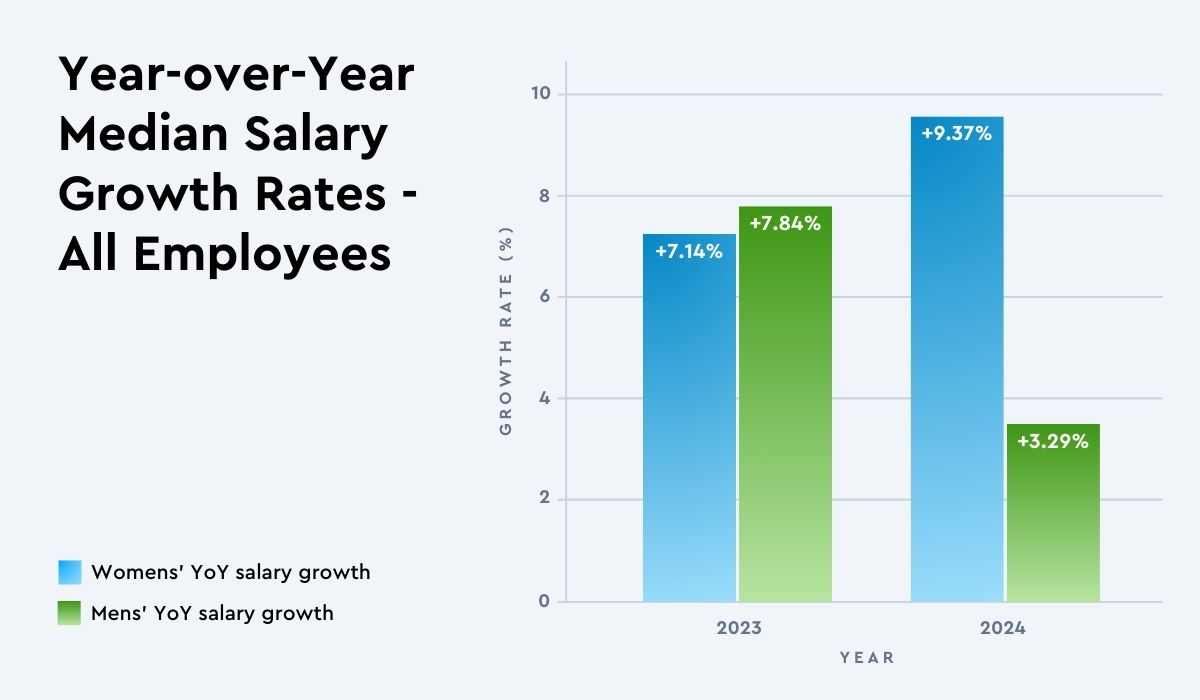
Year-over-year median salary growth rates for all employees, 2023 to 2024, among Visier customers
Women’s salaries grew by approximately 9% (9.37%) in 2024, outpacing men's median salary growth of 3.29%. This is an improvement compared to 2023 when women's median salary growth was 7.14%, slightly behind men’s median growth rate of 7.84%.
3. For managers, the gender pay gap remained stable at around -10%
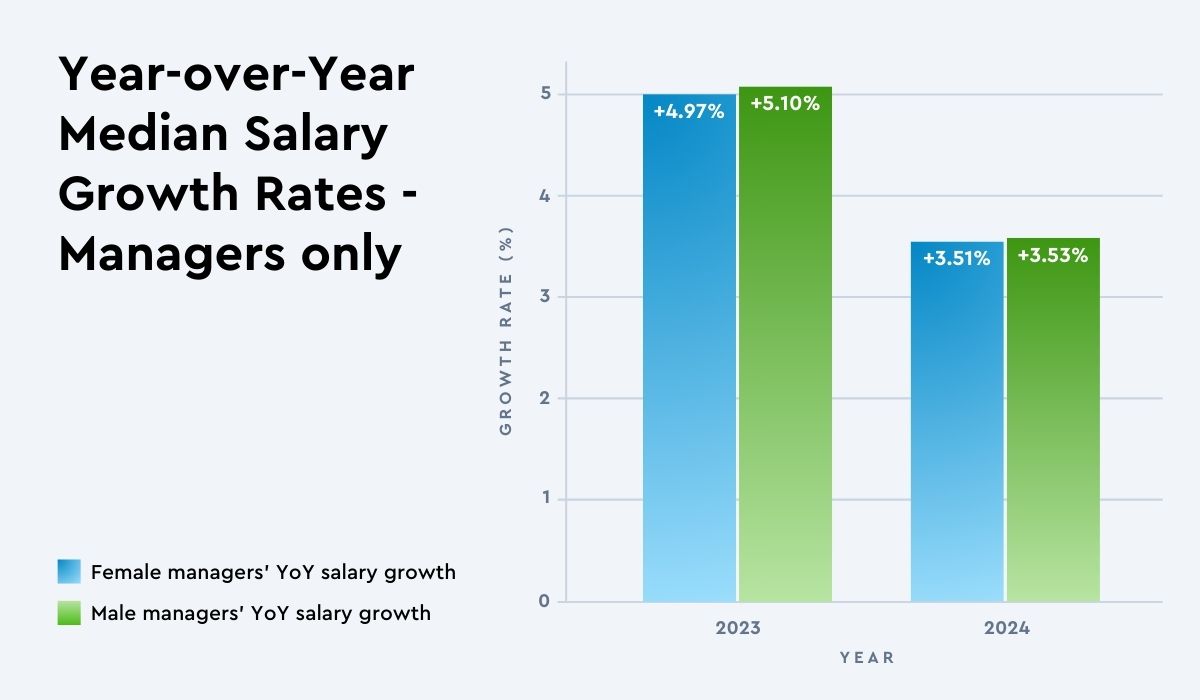
Year-over-year median salary growth rates for managers only, 2023 to 2024, among Visier customers
Despite these overall advances, the gender pay gap among managers remained stable at approximately -10%. Specifically, the median salary ratio for managers was $0.90 in both 2023 and 2024, indicating female managers consistently earned 90 cents for every dollar earned by male managers. Salary growth among managers was nearly identical between genders, with male managers’ median salaries increasing by 3.53%, marginally ahead of the 3.51% increase for female managers.
The year 2024 marks significant progress in gender pay equity among organizations represented in the Visier Community Database, reflected by a 36% narrowing of the overall pay gap, bringing female salaries notably closer to male salaries. However, the persistent gap among managerial roles highlights an enduring "glass ceiling": significantly fewer women (45.36%) than men (54.6%) occupy managerial positions. In practical terms, this translates to only about one woman in every 11 reaching a managerial role, compared to one man in every seven.

Why the gap persists, and how workforce analytics reveals actionable insights
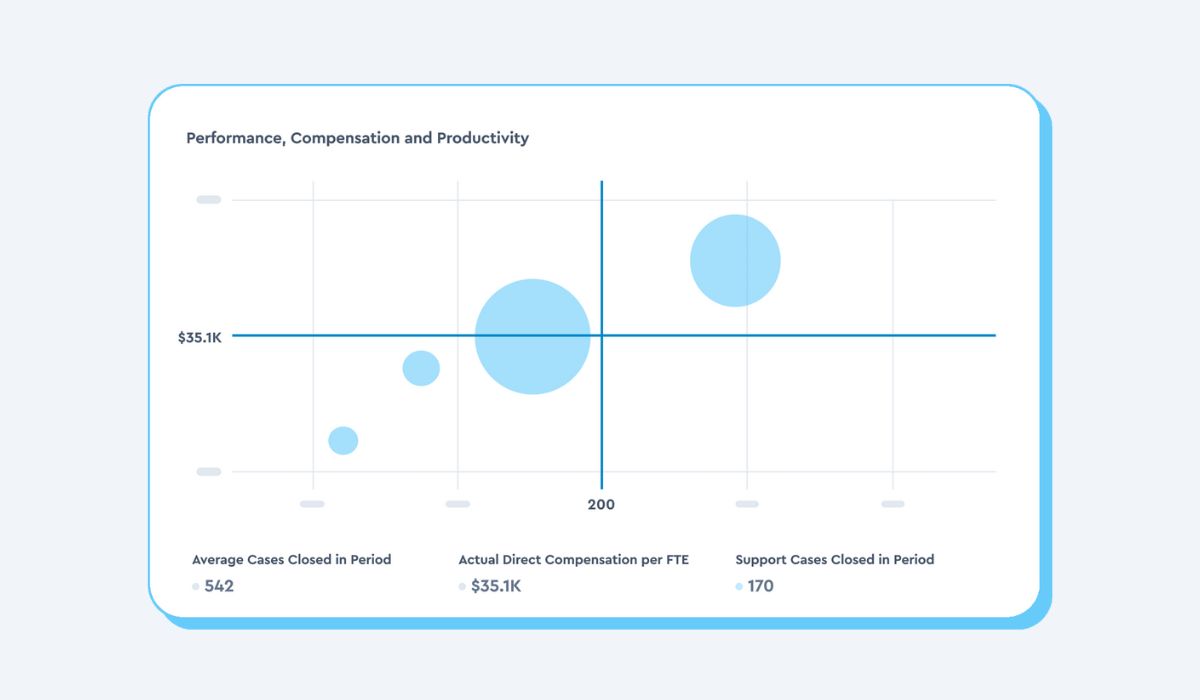
Integrate work data with people data to uncover how factors like compensation affect productivity
The gender pay gap persists due to several intertwined factors, including occupational segregation, biased hiring or promotion practices, limited representation in leadership roles, and inequitable compensation structures.
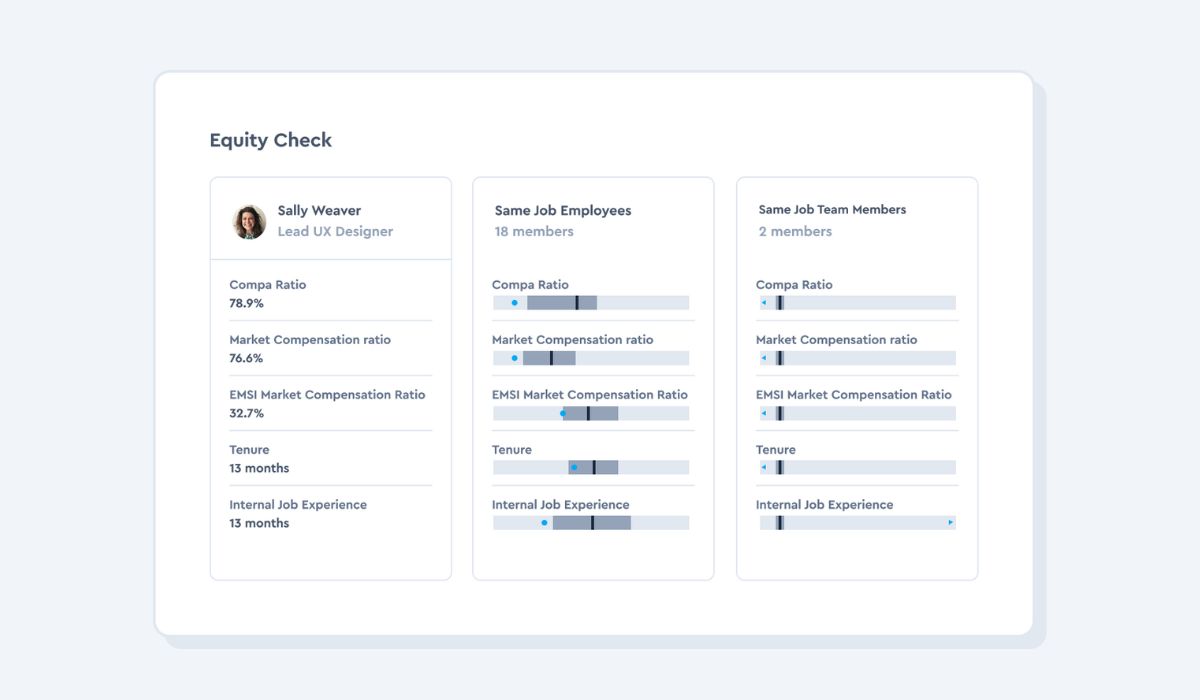
Applying insights from workforce analytics, and comparing to benchmarks are two strategies that allow companies to ensure they compensating all employees fairly
Applying workforce analytics can provide organizations with crucial visibility into these issues, enabling leaders to identify hidden biases, analyze representation across roles, benchmark compensation fairly, and pinpoint areas where targeted interventions can effectively close pay gaps and foster equitable career progression.
*Visier’s database contains >25 million live employee records from over 55,000 customers in 75 countries. Companies represent a wide range of industries, including healthcare, technology, financial services and insurance, energy, and manufacturing. The results are presented in median salary ratios. For each of the included companies, Visier ensured a high degree of confidence in both data availability and quality for the topics and time period being covered by this report.

